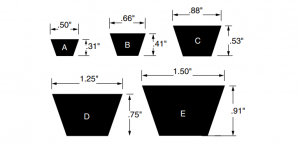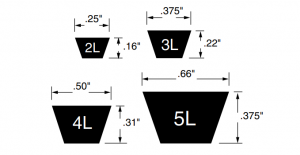The ASE G1 Certification test contains 55 scored questions, plus 10 unscored research questions, that cover a range of skills and knowledge related to maintenance and light repairs in engine systems, automatic transmission/transaxle, manual drivetrain and axles, suspension and steering, brakes, electrical, and heating and air conditioning.
Mileage is a big factor in drive belt wear, but so is general age, regardless of use. Modern drive belts, made of the durable synthetic rubber known as ethylene propylene diene monomer (EPDM), last much longer than older neoprene drive belts, but they do still get old, wear down and lose performance.
Neoprene drive belts should be replaced if there are three cracks in a three-inch section, but EPDM drive belts resist cracking because of their increased elasticity. This is why a visual check for cracks isn’t the best indicator of true drive belt wear. EPDM drive belts can run 100,000 miles or beyond with no visual cracks. A far better indicator of wear on EPDM drive belts is material loss. Serpentine drive belt drives are exposed to grit, rocks, salt and water, and, over time, these contaminants along with slight misalignments result in wear of the rubber rib surface.
A drive belt is like a tire in that over time its tread will wear down, which will reduce its performance. As a drive belt’s ribs start to wear and flatten, a drive belt starts to lose its ability to grip or function properly, causing it to slip, which puts a strain on other components within the engine. As little as 5% rib material loss and surface wear can affect how the drive belt performs, and just 10% drive belt slippage can affect the overall driveability of a vehicle.
In terms of vehicle performance, a persistent check engine light, reduced engine cooling, inconsistent power steering performance or poor A/C system performance are all signs of drive belt slip caused by wear.
This article comes from tirereview edit released


